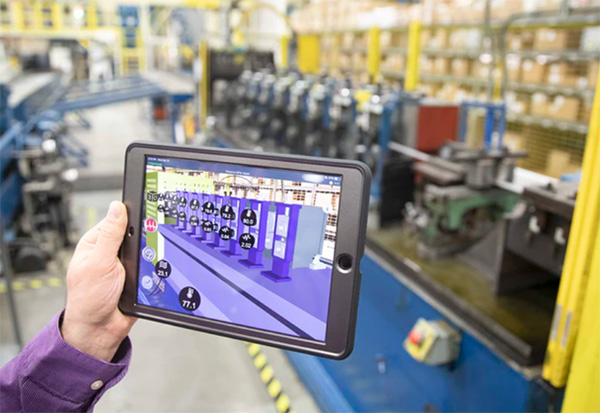U.S. manufacturing modernization hinges on AI, robotic and global partnerships. Tax incentives and employee development are key to competitiveness.
By Dijam Panigrahi
The U.S. manufacturing sector is facing both unprecedented challenges and industry-wide opportunities. As global competition intensifies and technological advancements accelerate, the need for modernization has never been more pressing. To maintain its competitive edge and drive economic growth, the American manufacturing industry must embrace cutting-edge technologies and forge strategic international partnerships.
At the heart of this modernization effort lies the integration of advanced technologies such as artificial intelligence (AI), robotics, automation, and immersive mixed reality solutions. These innovations have the potential to further modernize production processes, enhance efficiency, and unlock new realms of possibility for manufacturers.
AI, for instance, can optimize supply chain management, predict maintenance needs, and streamline quality control processes with unprecedented accuracy. By leveraging machine learning algorithms, manufacturers can analyze vast amounts of data to make informed decisions, reduce waste, and improve overall productivity.
Robotics, another cornerstone of modern manufacturing, offers the promise of increased precision, consistency, and speed in production. Collaborative robots, or cobots, can work alongside human workers, augmenting their capabilities and taking on repetitive or physically demanding tasks.
Immersive mixed reality solutions, including augmented reality (AR) and virtual reality (VR), are modernizing the way manufacturers design, prototype, and maintain products – in addition to employee training and remote customer service initiatives. These technologies enable engineers and designers to visualize and interact with 3D models in real-time, reducing the need for physical prototypes and accelerating the product development cycle. In maintenance and repair scenarios, AR can provide technicians with real-time guidance and information, improving accuracy and reducing downtime.

However, the path to modernization is not without its challenges. One of the most significant hurdles facing the U.S. manufacturing sector is the current labor shortage and skills gap. As manufacturing processes become increasingly sophisticated, the demand for workers with advanced technical skills continues to grow.
India, with its large pool of skilled tech workers and growing manufacturing sector, presents an excellent opportunity for collaboration. By fostering partnerships with India-focused educational institutions and companies, U.S. manufacturers can tap into a vast reservoir of talent and expertise. These collaborations could take various forms, from joint training programs and knowledge exchange initiatives to remote work arrangements and talent-sharing agreements.
Case in point, a recent survey of manufacturing executives shows this level of interest with other friendly countries. Forty percent of executives said they do not want to be over reliant on China for manufacturing because they are concerned about supply chain vulnerabilities. Another 40% said they are actively pursuing partnerships with manufacturing partners in India to achieve growth and expansion1.
The recent proposals by Vice President Kamala Harris underscore the growing recognition of the need to support and revitalize the U.S. manufacturing sector. Her proposed tax incentives for investments in manufacturing and production, spanning key areas such as biomanufacturing, aerospace, artificial intelligence, and quantum computing, could provide a significant boost to modernization efforts.
These incentives, aimed at countering global competition and revitalizing factory towns, align well with the broader goal of strengthening U.S. manufacturing capabilities.
To this end, policymakers, industry leaders, and educational institutions must work together to create a cohesive strategy for manufacturing modernization. This strategy should focus on several key areas:
It is clear that the success of U.S. manufacturing will depend on our ability to embrace change and innovation. The integration of advanced technologies, coupled with strategic international partnerships, offers a path forward that can reinvigorate American manufacturing and secure its position as a global leader in the 21st century.
The challenges are significant, but so too are the opportunities. By working together – across industries, borders, and political divides – we can reinvigorate a manufacturing sector that is not only competitive but also sustainable and inclusive.

About The Author:
Dijam Panigrahi is Co-founder and COO of GridRaster Inc., a leading provider of cloud-based AR/VR platforms that power compelling high-quality AR/VR digital twin experiences on mobile devices for enterprises. For more information, please visit www.gridraster.com.
In this episode, I sat down with Beejan Giga, Director | Partner and Caleb Emerson, Senior Results Manager at Carpedia International. We discussed the insights behind their recent Industry Today article, “Thinking Three Moves Ahead” and together we explored how manufacturers can plan more strategically, align with their suppliers, and build the operational discipline needed to support intentional, sustainable growth. It was a conversation packed with practical perspectives on navigating a fast-changing industry landscape.